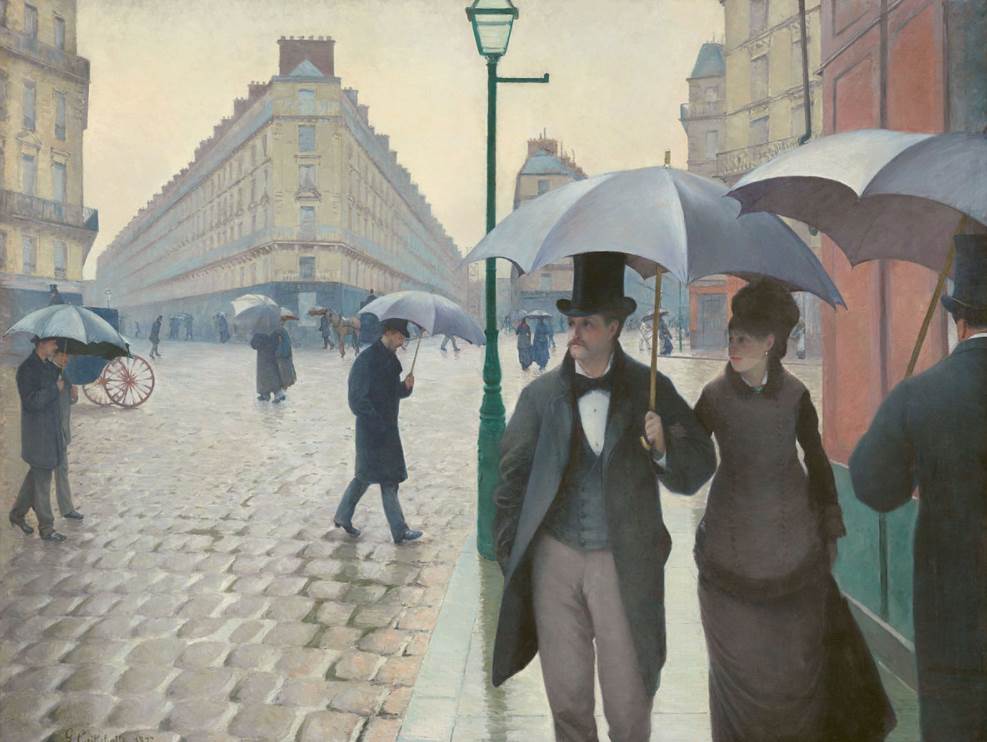With a collection size of over 300,000 works of art and an average yearly visitor count of over 1.5 million people, the Art Institute of Chicago in Downtown Chicago can be classified as one of the greatest museums in the United States and even the world.
Founded as the Chicago Academy of Fine Arts in 1879 and renamed to its current name in 1882, it’s also one of the oldest art museums in the United States.
It became the second-largest museum after the MET in New York city by floor space in 2009, a year that an expansion phase that is known as the “Modern Wing” was completed. This section was designed by Renzo Piano, the co-architect of the peculiar Centre Pompidou in Paris in the 1970s.
The quality of the artworks at the museum can also hold a candle to the collection of the MET, and in this article, you’ll discover some of the most famous paintings at the Art Institute of Chicago, iconic works that you simply have to see while you’re there.
1. Nighthawks – Edward Hopper
- Date created: 1942
- Dimensions: 84.1 × 152.4 centimeters (33.1 x 60 inches)
Nighthawks is the most famous painting by American Realism artist Edward Hopper (1882-1967). It depicts a diner in a downtown area of a city that is brightly illuminated at night, a sheer contrast to the dark and gloomy city streets.
It’s one of the best-recognizable paintings in American art and one of the most famous paintings at the Art Institute of Chicago. This makes it all the more remarkable that the museum was able to acquire it for merely $3,000 just a few months after it was completed in 1942.
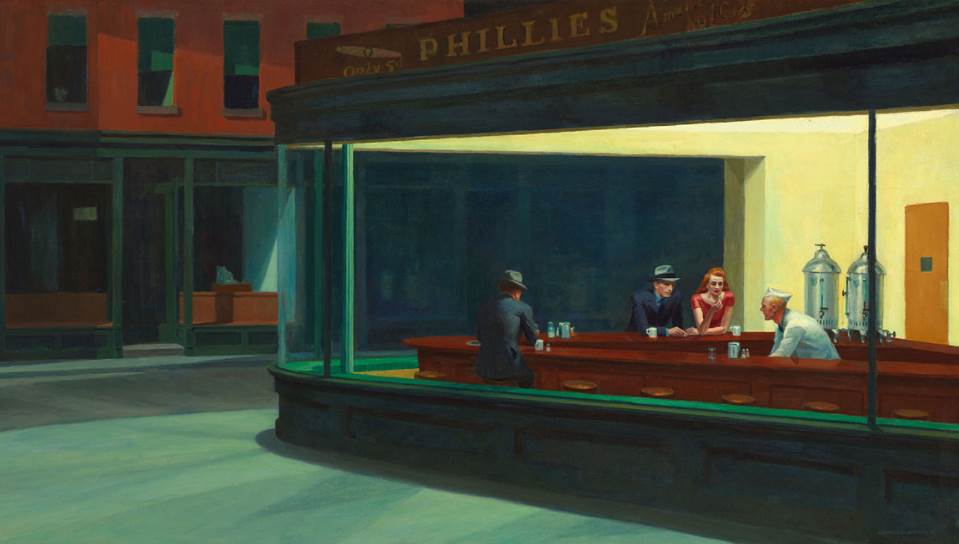
2. American Gothic – Grant Wood
- Date created: 1930
- Dimensions: 78 × 65.3 centimeters (30.75 × 25.75 inches)
American Gothic is another classic American work of art painted by Grant Wood (1891-1942), a man renowned for depicting the American rural Midwest. The depicted house in the background is called the American Gothic House and is located in Eldon, Iowa.
This structure was built in the Carpenter Gothic style which was popular in this part of the county in the early 20th century. The depicted figures were based on Wood’s sister, a woman named Nan Wood Graham along with their dentist, a man named Dr. Byron McKeeby.

3. A Sunday Afternoon on the Island of La Grande Jatte – Georges Seurat
- Date created: 1884-1886
- Dimensions: 207.6 × 308 centimeters (81.7 × 121.25 inches)
A Sunday Afternoon on the Island of La Grande Jatte is the most famous painting by French artist and one of the most renowned Post-Impressionists Georges Seurat (1859-1891). It’s the epitome of the pointillist style that he helped to develop together with Paul Signac (1863-1935).
The relatively large painting depicts a park on the banks of the River Seine in Paris where Parisians hang out during the weekend. It’s the artist’s Magnum Opus and instantly made him famous as one of the leaders of the Post-Impressionist movement in the 1880s.
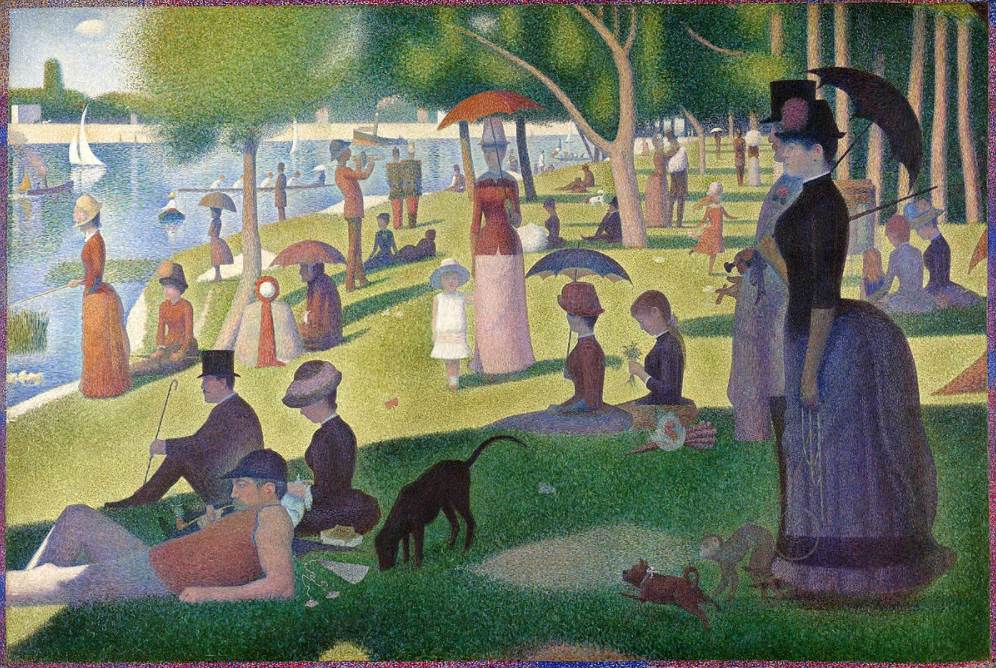
4. The Old Guitarist – Pablo Picasso
- Date created: 1903-1904
- Dimensions: 122.9 × 82.6 centimeters (48.4 × 32.5 inches)
The Old Guitarist is a painting by Spanish artist and arguably one of the most famous artists in history, Pablo Picasso (1881-1973). It was painted shortly after the artist had moved to Paris and as living in relative poverty.
This period in the artist’s life is called the “Blue Period” (1901-1904) and reflects the desperate state in which Picasso found himself during these early stages of his career. It depicts an old guitarist on the streets of Barcelona and is a prelude to the renowned Cubist artist he would become.

5. Bedroom in Arles (Version 2) – Vincent van Gogh
- Date created: April 1889
- Dimensions: 72 × 90 centimeters (28.3 × 35.4 inches)
As the name of this painting suggests, Bedroom in Arles depicts the bedroom in which Vincent van Gogh (1853-1890) stayed during the time that he lived in Arles, a small town in southern France. It’s one of 3 paintings he produced of the same subject with slight variations.
The other two paintings referred to as such in the oeuvre of van Gogh are located in the Van Gogh Museum in Amsterdam and the Musée d’Orsay in Paris. This bedroom was located in a house that he painted as well called the Yellow House.
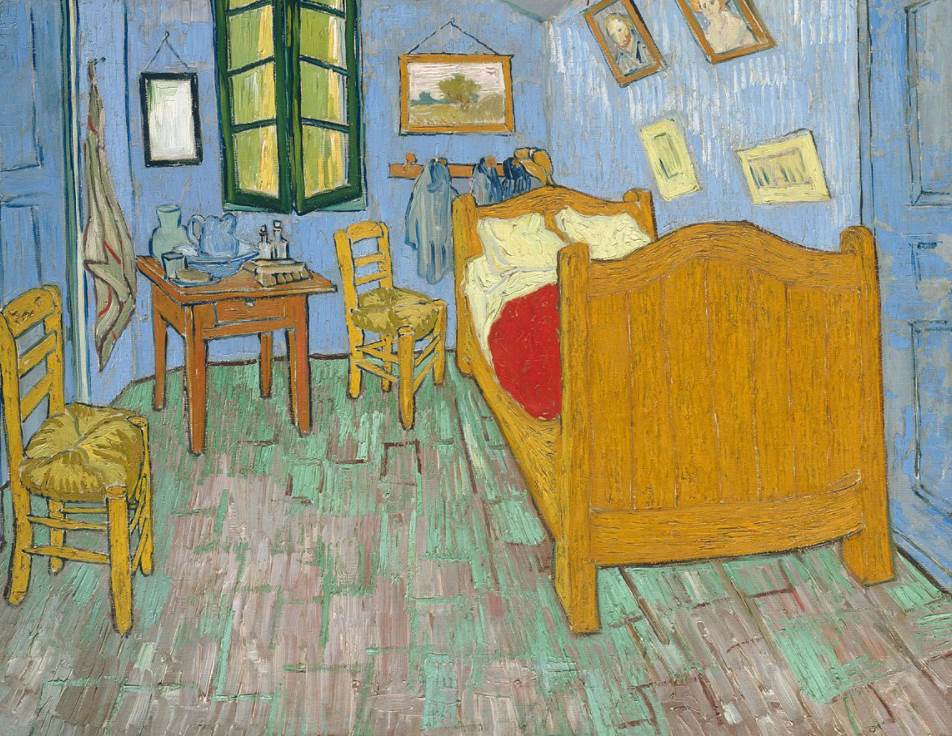
6. Water Lily Pond – Claude Monet
- Date created: 1900
- Dimensions: 89.8 × 101 centimeters (35.35 x 39.76 inches)
Water Lily Pond is one of the 250 paintings depicting the garden of French Impressionist artist Claude Monet (1840-1926). This particular Monet painting depicts the Japanese bridge that crosses the Lilypond in the garden of his house.
This house is located in Giverny, a small town in the Normandy region of France, about 80 kilometers (50 miles) northwest of Paris. This house and its garden were where Monet lived and worked during the final decades of his life and can still be visited as a tourist attraction today.

7. At the Moulin Rouge – Henri de Toulouse-Lautrec
- Date created: 1892-1895
- Dimensions: 123 × 140 centimeters (48 × 55 inches)
At the Moulin Rouge is a painting by Henri de Toulouse-Lautrec that depicts the interior of the most famous entertainment venue in Paris, a cabaret called the Moulin Rouge. This place was built in 1889, shortly before this work was produced. This version of the cabaret burned down in 1915 and has since been rebuilt.
The artist was a fan of this venue because it’s one of the multiple versions depicting the Moulin Rouge. Henri de Toulouse-Lautrec (1864-1901) can be seen in profile in the background. Many of the people in this painting have been successfully identified.
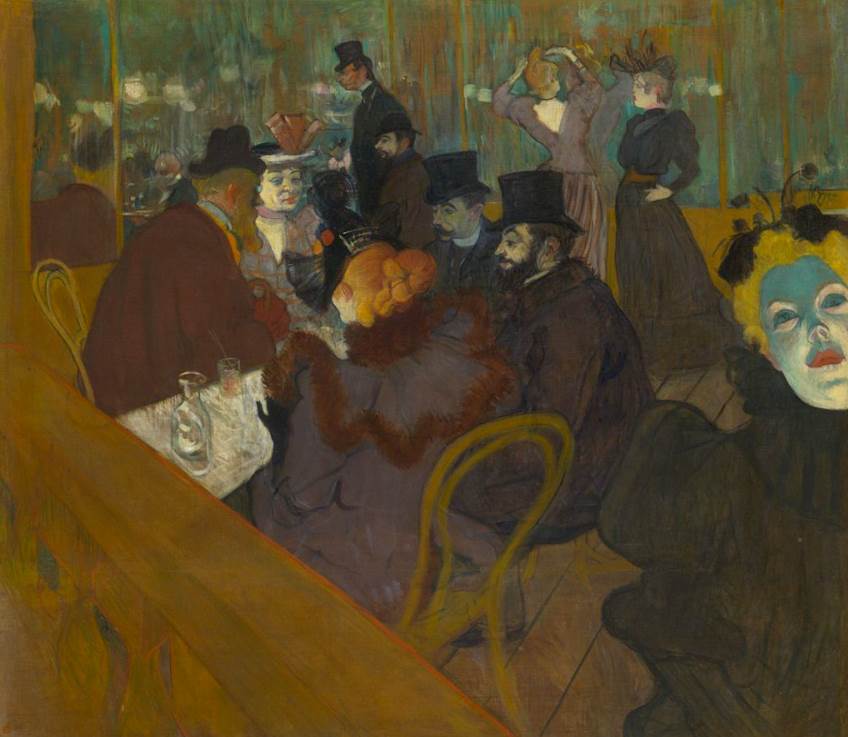
8. Two Sisters (On the Terrace) – Pierre-Auguste Renoir
- Date created: 1881
- Dimensions: 100.5 × 81 centimeters (39.6 × 31.9 inches)
Two Sisters is also sometimes referred to as “On the Terrace,” names given to the painting by the artist himself, Impressionist artist Pierre-Auguste Renoir (1841-1919), and to its first owner, French art dealer Paul Durand-Ruel (1831-1922).
The older sister has been positively identified as Jeanne Darlot (1863-1914), an 18-year-old who became an actress. The younger sister remains unknown until today. The location of the setting was the terrace of the Maison Fournaise, located in Chatou on an island in the Seine just northwest of Paris.
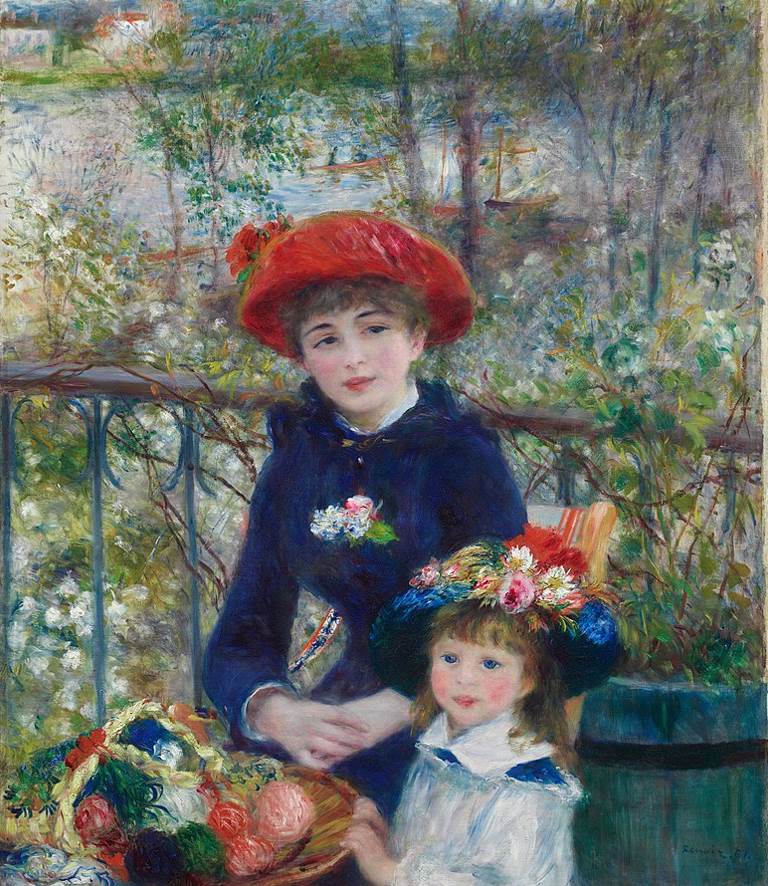
9. The Basket of Apples – Paul Cézanne
- Date created: 1893
- Dimensions: 65 × 80 centimeters (25.6 × 31.5 inches)
The Basket of Apples is a still-life painting by Paul Cézanne (1839-1906), a Post-Impressionist artist who developed a distinctive style that transformed the world of art. His object-based depiction of the subject matter was adopted by Fauvism artists and Cubism artists in the first decades of the 20th century.
These particular types of paintings depicting a traditional subject such as a fruit basket hadn’t been produced since the rise of the Neoclassical artists in the late 18th century. This notion makes the still-lifes produced by Cézanne quite remarkable artworks and The Basket of Apples one of the most famous paintings at the Art Institute of Chicago.

10. Paris Street; Rainy Day – Gustave Caillebotte
- Date created: 1877
- Dimensions: 212.2 × 276.2 centimeters (83.5 x 108.7 inches)
Paris Street, Rainy Day was originally referred to as “Rue de Paris, temps de pluie,” and is the most famous work of art by French artist Gustave Caillebotte (1848–1894). He produced works that combined elements of the Impressionist movement as well as realism, a notion that is reflected in this remarkable work of art.
As the name suggests, it depicts a street in Paris today known as “Place de Dublin.” This square in the northern part of Paris next to the train station Gare Saint-Lazare was known back then as the Carrefour de Moscou. This painting also emphasizes the artist’s keen interest in photography.
